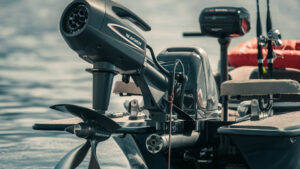Finding the right headlamp for running can be tricky. The lumen count is vital.
Running at night requires good visibility. A lightweight headlamp with the right lumens ensures you see and stay safe. But how many lumens do you need for running? The answer depends on several factors. Terrain, speed, and personal preference all play a role.
This guide will help you understand the right lumen count for your running headlamp. You’ll learn what to consider to find the best option for your needs. Stay tuned to discover how to enhance your nighttime runs with the perfect headlamp.
Importance Of Lumens In Running Headlamps
Running at night requires proper lighting. Lumens measure the brightness of headlamps. Knowing the right lumen count is crucial. It ensures you see the path clearly. It also keeps you safe from obstacles.
Brightness And Safety
The right brightness is essential for night running. A headlamp with 100 to 200 lumens is ideal. It provides enough light to see the trail. It also helps you avoid tripping over roots or rocks.
Bright light can also alert others to your presence. This is important for avoiding collisions. It makes you more visible to cars and other runners. Always choose a headlamp with adjustable brightness. It allows you to adapt to different environments.
Energy Efficiency
Energy efficiency is important for long runs. Higher lumens often mean higher battery usage. A headlamp with adjustable settings can save energy. Lower settings can be used in well-lit areas. Higher settings can be reserved for darker paths.
Rechargeable batteries can also be a good choice. They can be more cost-effective in the long run. Always carry spare batteries if you run long distances. This ensures your headlamp does not run out of power.
Factors Affecting Lumen Requirements
Selecting the right lumen count for your lightweight running headlamp is crucial. Several factors influence how many lumens you need. Understanding these factors ensures you have the right light for your runs. Let’s explore two key elements: running environment and time of day.
Running Environment
The running environment plays a significant role in determining lumen requirements. Trail running demands more lumens compared to urban running. On trails, obstacles like rocks and roots are common. You need more light to see these hazards clearly. A headlamp with 200 to 300 lumens is ideal for trail running.
In contrast, urban running usually has streetlights. Here, a headlamp with 100 to 150 lumens is sufficient. This range provides enough light to see the path and alert others of your presence.
Time Of Day
The time of day also impacts the lumens you need. Early morning and evening runs require different lighting. During dawn and dusk, visibility is low but there is some natural light. A headlamp with 100 to 200 lumens works well in these conditions.
Night running needs more powerful lighting. Complete darkness requires a headlamp with 200 to 300 lumens. This ensures you can see far ahead and spot any obstacles.
Consider your environment and the time of day for optimal lumen selection. This ensures a safe and enjoyable running experience.
Ideal Lumen Range For Different Conditions
Choosing the right lumen range for your lightweight running headlamp can make a big difference in your running experience. Whether you’re running in the city streets or navigating through rugged trails, the amount of light you need will vary. Here, we’ll break down the ideal lumen range for different running conditions, making it easier for you to pick the perfect headlamp for your needs.
Urban Running
When you’re running in urban areas, streetlights often provide a decent amount of illumination. However, you still need a headlamp to spot uneven sidewalks, curbs, or any unexpected obstacles. For city running, a headlamp with 50 to 150 lumens is usually sufficient. Here’s why:
- 50-100 lumens: Ideal for well-lit streets and sidewalks. It helps you see small obstacles and ensures you’re visible to drivers and cyclists.
- 100-150 lumens: Useful for areas with fewer streetlights or when you want a bit more brightness to feel safe.
Personally, I find that a headlamp with around 100 lumens is perfect for my evening runs around the neighborhood. It provides just the right balance of visibility and battery life.
Trail Running
Trail running requires more light due to the unpredictable terrain and lack of ambient lighting. You need to see rocks, roots, and other hazards clearly. For trail running, aim for a headlamp with 150 to 300 lumens. Here’s a quick guide:
- 150-200 lumens: Suitable for well-known trails where you’re familiar with the path. It provides enough light to navigate safely without being too bright.
- 200-300 lumens: Best for unfamiliar or technical trails. The extra brightness helps you spot obstacles from a distance, giving you more time to react.
On my last trail run, I used a headlamp with 250 lumens. It was a night run, and the light was strong enough to illuminate the path ahead, making me feel secure and confident.
Choosing the right lumen range is crucial for a comfortable and safe run. Think about your running environment and pick the headlamp that best suits your needs. Happy running!
Lightweight Headlamp Features
When you’re out running, especially in low-light conditions, a good headlamp is essential. But what makes a headlamp truly great? Let’s dive into the features that make lightweight running headlamps stand out.
Comfort And Fit
Comfort is key when you’re running. You don’t want to feel like you’re carrying a brick on your head. Here are some things to look for:
- Adjustable Straps: Make sure the headlamp has straps that can be adjusted. This ensures a snug fit without causing discomfort.
- Lightweight Design: The lighter, the better. Heavy headlamps can cause headaches and might even fall off during a run.
- Padded Forehead: Some headlamps come with padding at the forehead area. This extra cushion can make a big difference over long runs.
For example, I once used a heavy headlamp, and it kept sliding down my forehead. It was a nightmare! Since then, I’ve always checked the weight before buying.
Battery Life
Imagine you’re halfway through your run, and your headlamp dies. Not fun, right? Battery life is crucial for uninterrupted runs. Here’s what to consider:
- Battery Type: Some headlamps use disposable batteries, while others are rechargeable. Rechargeable ones are eco-friendly but check how long they last on a single charge.
- Battery Indicator: Look for headlamps with a battery indicator. This feature tells you when it’s time to recharge or replace batteries.
- Run Time: Check the run time on different brightness settings. A longer run time on high brightness can be a lifesaver.
I recently made the switch to a rechargeable headlamp. It’s been a game-changer for my night runs. I no longer worry about running out of power midway.
Balancing Lumens And Weight
Choosing the right lumens for lightweight running headlamps is crucial. Aim for 100-200 lumens for urban runs. Go higher, around 200-400 lumens, for trail running in darker areas. Balancing lumens and weight ensures safety without compromising comfort.
Balancing lumens and weight is crucial for selecting the best running headlamp. A headlamp should offer enough brightness without adding unnecessary weight. This ensures comfort and effectiveness during your runs.
Optimal Lumen-to-weight Ratio
An optimal lumen-to-weight ratio balances brightness and comfort. Aim for a headlamp that offers 200-400 lumens. This range is ideal for night runs. It provides enough light without being too heavy. Most lightweight headlamps weigh around 50-100 grams. This weight is comfortable for long runs. It won’t cause strain or discomfort. Choose a headlamp with adjustable settings. This allows you to customize brightness. It helps in different running conditions.
Trade-offs
Choosing the right headlamp involves trade-offs. Higher lumens mean brighter light. But they also add weight and drain the battery faster. Lower lumens save weight and extend battery life. But they may not provide enough light for dark trails. Consider your running environment. Urban areas may need fewer lumens. Trails and forests need more brightness. Think about your running duration. Long runs need efficient battery use. Short runs can handle higher lumens. Balance your needs to find the perfect headlamp.
Top Lightweight Running Headlamps
Hey friends, today we are talking about something really useful for all the runners out there – lightweight running headlamps. Whether you are running early in the morning or late at night, a good headlamp can make a huge difference. But how do you choose the right one? Let’s dive into some popular models and see what users have to say about them.
Popular Models
When it comes to lightweight running headlamps, there are a few popular models that stand out. These models are not only lightweight but also offer excellent brightness and battery life.
- Petzl Bindi – This one is super light, weighing just 35 grams. It offers up to 200 lumens of brightness, perfect for urban runs.
- Black Diamond Sprint 225 – As the name suggests, it provides 225 lumens of brightness. It is also very compact and easy to carry.
- BioLite HeadLamp 200 – A great choice for those who value comfort. It weighs 50 grams and has a sleek design that sits flat on your forehead.
User Reviews
What do users think about these headlamps? Let’s take a look at some reviews.
| Model | User Rating | Comments |
|---|---|---|
| Petzl Bindi | 4.5/5 | “Light as a feather and bright enough for city running.” |
| Black Diamond Sprint 225 | 4.7/5 | “Great battery life and very bright. Perfect for trail runs.” |
| BioLite HeadLamp 200 | 4.6/5 | “Comfortable to wear for long periods. Doesn’t bounce around.” |
These reviews show that a good running headlamp can make a big difference. It can keep you safe and help you see better during your runs. So, if you’re looking for a new headlamp, consider one of these popular models. They come highly recommended by other runners just like you.
Maintenance And Care Tips
Hey friends, today we’re diving into some handy maintenance and care tips for your running headlamps. Keeping your headlamp in top shape ensures it’s always ready to light up your path. Let’s break it down step by step. We’ll cover how to clean your headlamp and take care of the battery. Simple and easy, right?
Cleaning The Headlamp
First things first, let’s talk about cleaning your headlamp. A clean headlamp provides better light and lasts longer. Here’s how you can keep it sparkling:
- Wipe it down: Use a soft, damp cloth to gently wipe the lens and body of the headlamp. Avoid using harsh chemicals as they can damage the plastic.
- Check for dirt: Look for any dirt or grime around the buttons and the battery compartment. Clean it with a cotton swab if needed.
- Dry thoroughly: After cleaning, make sure to dry the headlamp completely before storing it. Moisture can damage the electronics.
Battery Maintenance
Next up, let’s ensure your headlamp’s battery is always ready to go. Nothing worse than your light dying mid-run, right? Here’s what you need to do:
- Regular checks: Check the battery levels before each run. Replace or recharge as needed.
- Proper storage: Store your headlamp in a cool, dry place. Extreme temperatures can affect battery life.
- Remove batteries: If you’re not using the headlamp for a while, remove the batteries. This prevents leakage and extends battery life.
So there you have it! Keeping your headlamp clean and the battery well-maintained is a breeze with these tips. Happy running!
Conclusion And Recommendations
Choosing the right running headlamp is crucial for your safety and comfort. In this section, we’ll wrap up the main points and offer some final recommendations. Whether you’re a seasoned runner or just starting out, having a headlamp that suits your needs can make all the difference.
Summary Of Key Points
Let’s recap what we’ve covered so far:
- Lumens Matter: The brightness of your headlamp, measured in lumens, is essential for visibility.
- Lightweight Design: A lightweight headlamp ensures comfort and reduces strain during your runs.
- Battery Life: Longer battery life means you won’t be left in the dark during longer runs.
- Beam Distance: A longer beam distance helps you see obstacles from further away.
Final Thoughts
So, how many lumens do you need for a running headlamp? Here’s a simple guide:
- Low-Light Conditions: 100-200 lumens should suffice. Ideal for dawn or dusk.
- Moderate Darkness: 200-300 lumens. Perfect for evening runs in well-lit areas.
- Pitch Black: 300-400 lumens or more. Best for trails or unlit paths.
Remember, the right headlamp can significantly improve your running experience. It’s not just about brightness; it’s about finding a balance between weight, battery life, and beam distance.
Personal Recommendation
From my experience, a headlamp with around 250 lumens is a great all-rounder. It offers enough light without being too heavy. I recently used one during a late evening run, and it was perfect! I didn’t feel weighed down, and I could see clearly, even on the darker parts of the trail.
Final Thoughts
Choosing the right headlamp doesn’t have to be complicated. Focus on what suits your running environment and personal comfort. A good headlamp can make your runs safer and more enjoyable. Happy running!
Frequently Asked Questions
Is 500 Lumens Enough For Trail Running?
Yes, 500 lumens is enough for trail running. It provides adequate brightness for nighttime visibility and safety.
Is 400 Lumens Enough For Running?
Yes, 400 lumens is enough for running. It provides sufficient visibility on dark trails and roads. Choose a headlamp with a comfortable fit for the best experience.
Is 300 Lumens Bright Enough For Headlamp?
Yes, 300 lumens is bright enough for a headlamp. It provides sufficient light for most outdoor activities.
How Many Lumens Do I Need To Run At Night?
You need 100 to 200 lumens to run safely at night. This brightness ensures visibility and safety.
Conclusion
Choosing the right lumen count for a running headlamp is crucial. It impacts your safety and comfort. For urban areas, 100-200 lumens work well. Trails and dark paths need 200-400 lumens. Always consider battery life and weight. Balance brightness with comfort.
Test different headlamps to find your perfect fit. Stay safe and enjoy your runs, day or night.








